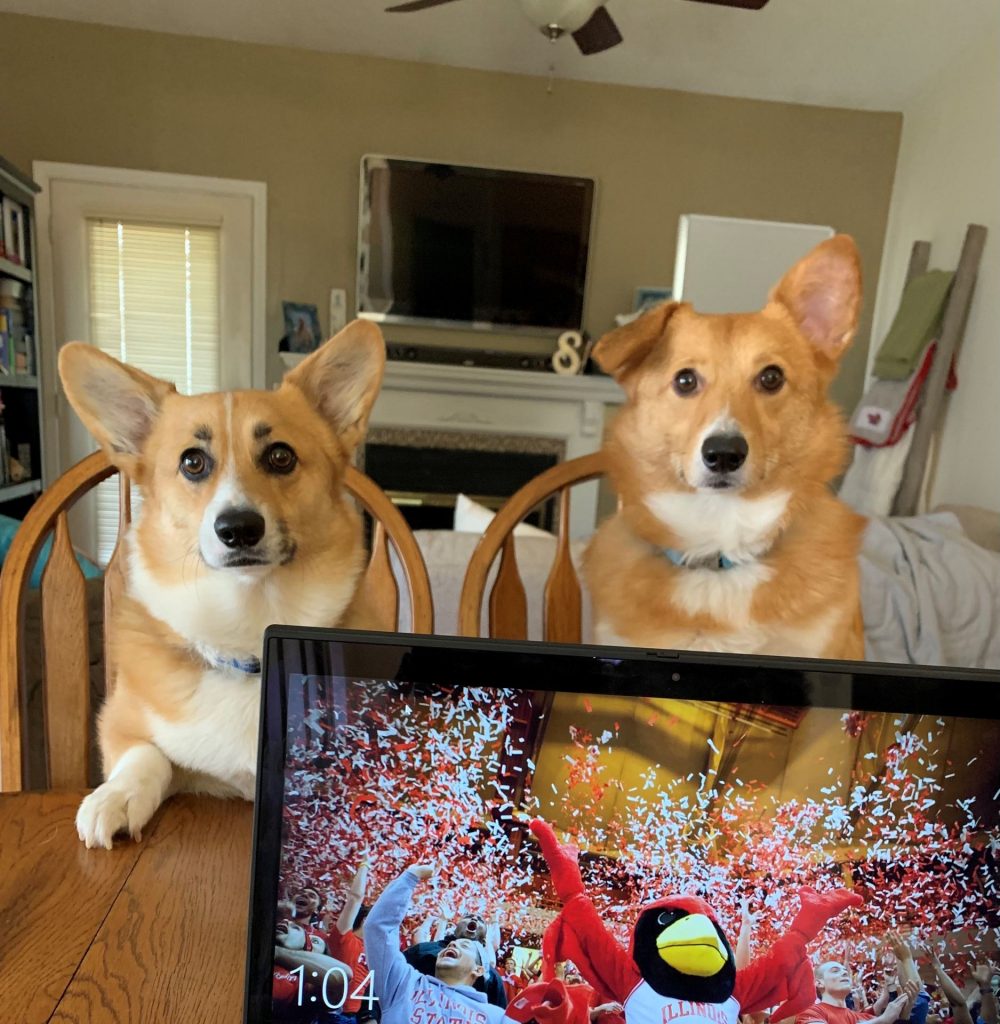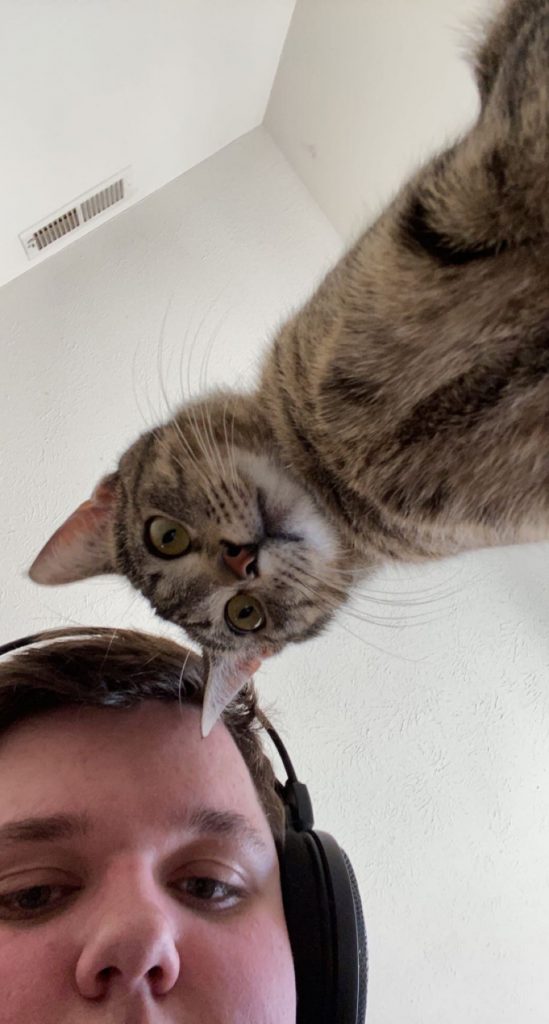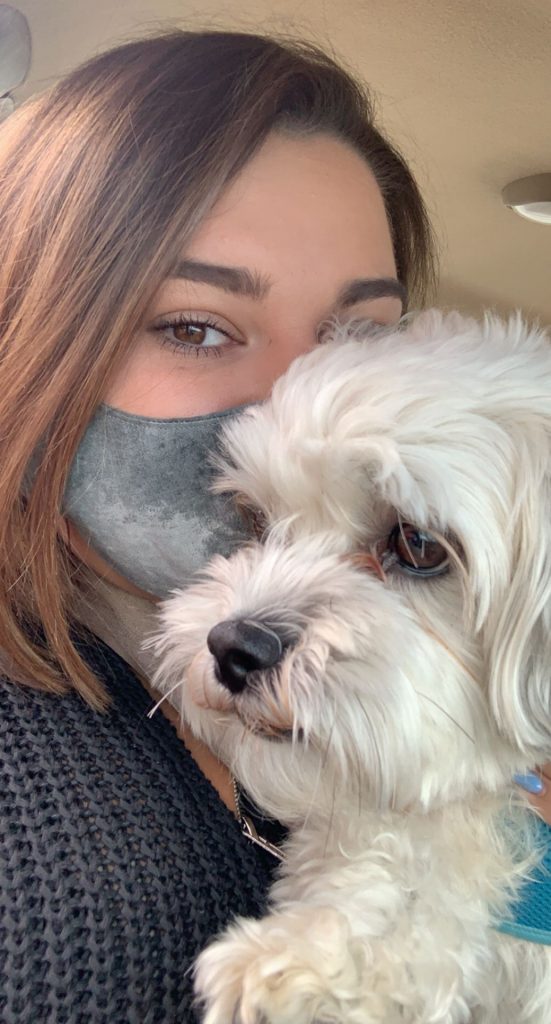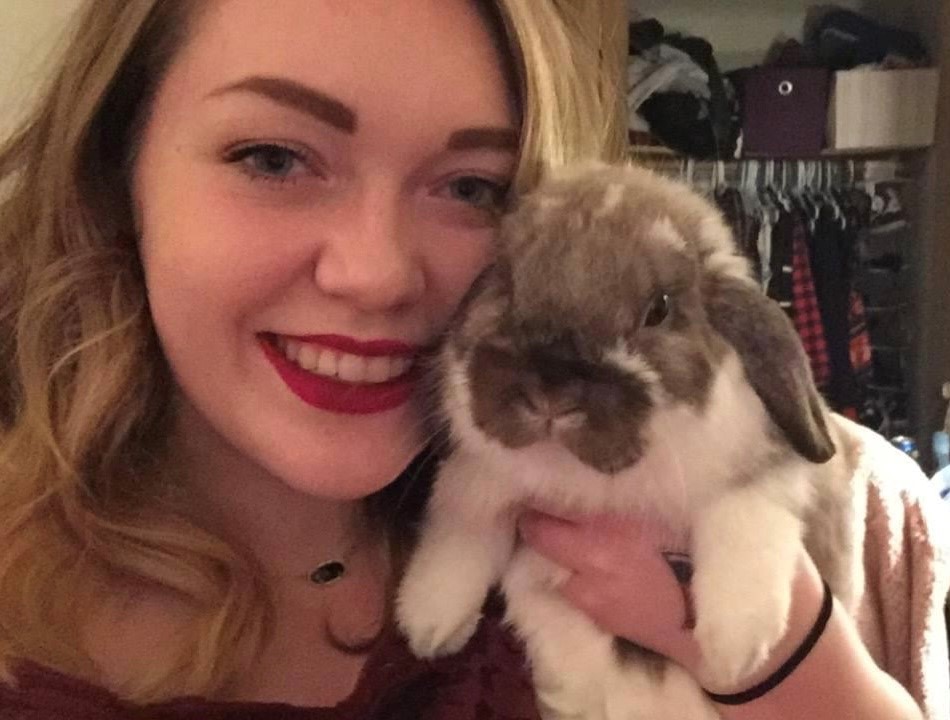Her co-workers have a great attitude, but they can be needy. When she starts a Zoom call, they’ll leave, but when they hear her click off, they come running back. Boundaries can be an issue. When Charlie and Leo get bored, they pop into a chair across from her and just stare.
Samantha Meranda’s coworkers are corgis, and over the past year, they’ve learned a lot about Admissions from listening to the assistant director of transfer recruitment. They try to be helpful, like letting her know when the doorbell rings and there’s an Amazon delivery.
“I’m very quick with the mute button,” she said.
Having their companionship has boosted her physical and mental health, and given her a routine, starting with a morning walk before work.
“They’ve been a great comfort during this crazy stressful time,” she said. “And they get me moving. If it wasn’t for them, I would go from the bed to the desk to the couch.”
Dr. Valerie Farmer-Dougan runs the Canine Behavior and Cognition Laboratory on campus. She’s been working from home, but the empty nester is not alone. She has five dogs and three cats.
“It’s certainly companionship and someone to talk to,” she said. “You talk to the dogs, who don’t really talk back, but at least they’re good listeners. I do find that helpful.”
During Zoom classes, her cats have made appearances, stepping on the keyboard, and she gets a kick out of seeing her students’ pets.
“It humanizes us and gives us a connection,” she said.
When we all went home, it disrupted our pets’ schedules too, she said, and that can lead to behavior issues.
“They may misbehave because you’re in their space and that can be frustrating. They may bark during an important meeting. They have this incredible sense of bad timing.”
When Farmer-Dougan’s stressed, her service dog picks up on it, and may try and distract her.
“They do try to help us, but it’s like any relationship. It’s not perfect.”
Professor Dr. Michael Gizzi has been teaching from home, too. At random times, his golden retriever, Gracie, will push through the door. Usually she’s out of camera range, but one day he gave her some screen time.
“The chat exploded,” he said. “The cameras that were off were all of a sudden on. They went crazy over her.”
The same thing happened when his cat, Jazz, showed up, which she tends to do when it’s close to dinner time.
“The students just come to life,” he said.
Senior Michelle Wexler gets it. She’s living at home with her family, which includes Benji, a shih-tzu/Maltese mix, who’s usually napping on her bed while she’s Zooming.
“He’s made a couple of class appearances,” Wexler said. “He walks across my computer to get to the window to smell the fresh air.”
Molly Martin ’20, a graduate student in speech language pathology, depends on Ollie for companionship, a rabbit she’s had for three years. Why a rabbit?
“I have no idea,” she said, laughing. “I go to pet stores for fun and I locked eyes with this little goober. He gives me something to look forward to, almost a purpose.”
Ollie has joined Zoom meetings, including clinicals with the Ecklemann-Taylor Speech and Hearing Clinic, where he’s a repeat visitor when clients ask to see him.
Her brother, ISU junior Max Martin, adopted a cat, which he named Ash.
“Because of the pandemic, I needed a friend,” he said. “She’s really great to have around. She’s so energetic, and she forces me to stop being lazy to play with her.”
When he needs a break, he’ll circle a laser pointer around the room, sending her into laps. And when he’s logged into class, he turns on another monitor with a screensaver of swimming goldfish.
Returning to school and work will be a huge transition for all, said Farmer-Dougan. Start a new routine now, she urges. Pull on your shoes, grab your keys and coat and leave the house, even if you’re just going to the mailbox. Gradually stretch the time to an hour or longer.
“Usually it’s the first 30 minutes where they’re incredibly stressed, and then they calm down,” she said. “We have to get back to routine. It’s going to be us comforting them as well as them comforting us. But we’ll all make it through.”





